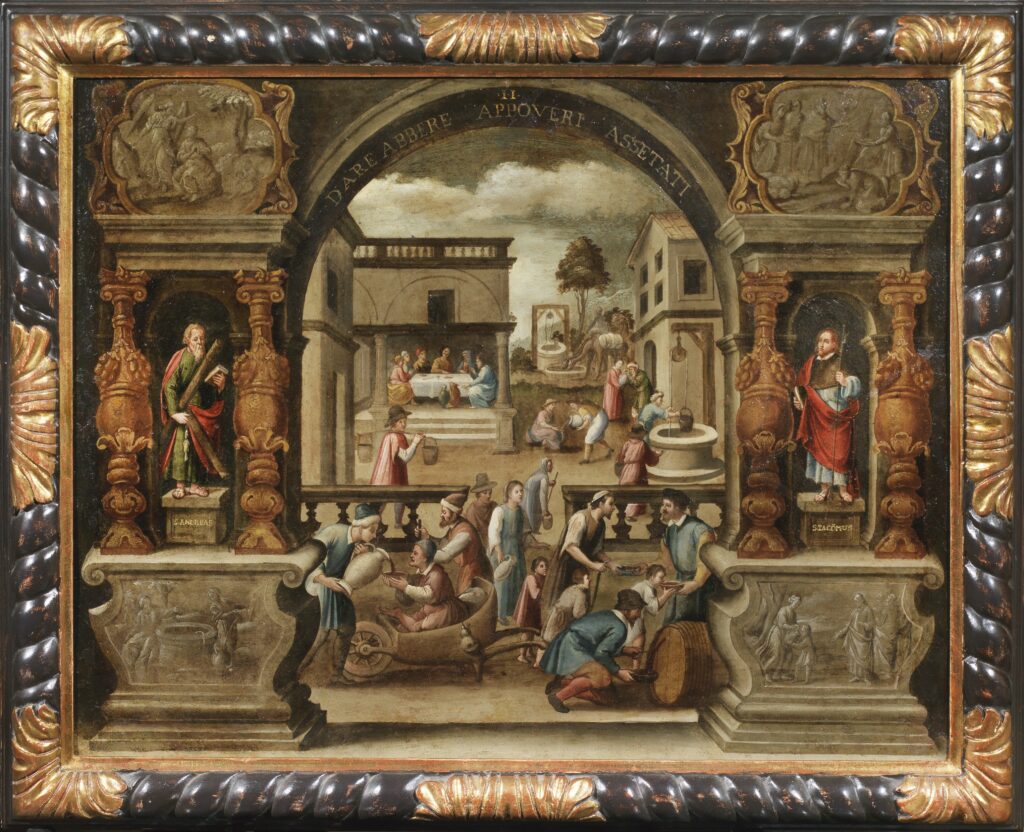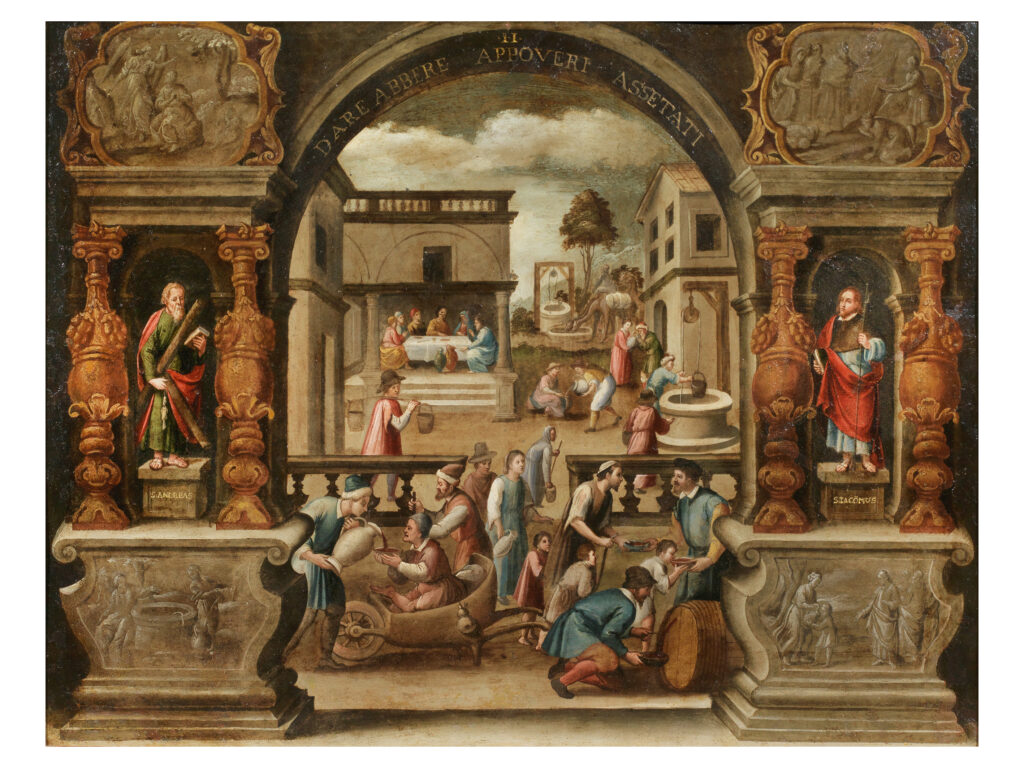FLEMISH SCHOOL OF THE LATE 16TH – EARLY 17TH CENTURY
Quenching the thirst of the parched poor
oil on copper, cm 51×66
Our oils on copper depict two of the “Seven Corporal Works of Mercy” enunciated by Jesus (Gospel of Matthew 25:42–46) and representing the precepts of Christian life through which it is possible to enter the Kingdom of Heaven.
Feeding the Hungry and Quenching the Thirst of the Parched are the titles of our two works which, in all likelihood, formed part of a series of seven.
In the first, under the arch, we read the inscription: “I / DARE AMANCIARE APPOVERI AFFAMATI”, while on the pedestals on which the two figures rest we can read “S. PETRE” and “S. PAULE”.
In the bottom centre, an oval-shaped shield with a blue background incorporates a depiction of a palm tree with a man shaking it next to a smaller figure, possibly in the background, in a black cassock. In the sky, in a central position, is the sun flanked by two stars, one on each side.
In the second copper, also beneath the arch, we read “II / DARE ABBERE APPOVERI ASSETATI” while, as can be seen from the inscriptions engraved on the pedestals, the two figures depicted are St Andrew and St James (“S. ANDREAS”; “S. IACÕMUS”).
The author of the two paintings is presumably a northern European artist active in Italy, as the backgrounds within which the two scenes unfold would suggest. Indeed, the buildings that form the backdrop are very characteristic of Tuscan and, more precisely, Florentine architecture, just as the loggia under which a meal is eaten is also of the same architectural stamp, but with a more sacred air.
Series such as the one to which the two copper paintings in question once belonged were not as common south of the Alps as they were in northern Europe. As if to spread awareness of the need to behave piously in those parts.


